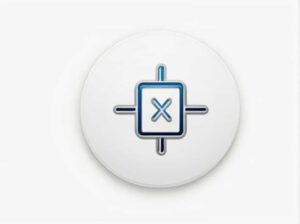A generator is an essential power source for homes businesses and outdoor activities. However one common problem users face is when the generator fails to generate voltage. If your generator is running but not producing electricity several factors could be causing this issue.
In this topic we will explore the common reasons why a generator does not produce voltage and how to troubleshoot and fix these problems effectively.
Understanding How a Generator Produces Voltage
Before troubleshooting it is important to understand how a generator generates electricity. A typical generator consists of:
- An engine that drives the generator.
- An alternator (stator and rotor) that generates voltage.
- A voltage regulator that controls output voltage.
- Brushes and slip rings that help transfer electricity.
If any of these components fail the generator may run but not produce power.
Common Reasons Why a Generator Is Not Producing Voltage
1. Loss of Residual Magnetism
Generators rely on residual magnetism in the alternator to start generating electricity. If the generator has not been used for a long time or was run without a load the magnetism may have dissipated preventing voltage generation.
Solution:
- Try flashing the field by applying a small DC voltage to the alternator.
- Run the generator with a power tool plugged in and turn the tool on and off quickly to restore magnetism.
2. Faulty Voltage Regulator
The voltage regulator controls the generator’s output voltage. If it is damaged the generator may not produce electricity.
Solution:
- Locate the voltage regulator and check for visible damage.
- Use a multimeter to test its functionality.
- Replace the voltage regulator if it is defective.
3. Tripped Circuit Breaker
Some generators have built-in circuit breakers that shut off power if there is an overload or short circuit. If the breaker is tripped no voltage will be output.
Solution:
- Reset the circuit breaker by switching it off and then back on.
- Reduce the load on the generator and check if power is restored.
4. Worn or Dirty Brushes and Slip Rings
In brush-type generators carbon brushes transfer electricity between moving and stationary parts. Worn-out or dirty brushes and slip rings can cause voltage loss.
Solution:
- Inspect the brushes and slip rings for wear or dirt buildup.
- Clean them with a soft cloth or fine sandpaper.
- Replace worn brushes if necessary.
5. Damaged Capacitor (For Capacitor-Based Generators)
Many small generators use a capacitor to help with voltage regulation. If the capacitor is faulty the generator will not produce power.
Solution:
- Test the capacitor with a multimeter.
- Replace it if it shows no continuity or incorrect readings.
6. Loose or Damaged Wiring
Loose or disconnected wires in the generator’s alternator voltage regulator or output terminals can prevent voltage generation.
Solution:
- Inspect all wiring connections and tighten any loose wires.
- Check for burnt or damaged wires and replace them as needed.
7. Defective AVR (Automatic Voltage Regulator)
In modern generators the AVR helps maintain stable voltage output. A defective AVR can cause voltage loss.
Solution:
- Test the AVR using a multimeter.
- Replace it if it is not functioning properly.
8. Stator or Rotor Failure
The stator and rotor are the main components of the alternator. If they are damaged the generator will not generate power.
Solution:
- Use a multimeter to test the continuity of the stator and rotor windings.
- If the windings are burnt or show no continuity they need to be rewound or replaced.
9. Engine Speed Issues
Generators must run at a specific RPM (Revolutions Per Minute) to produce the correct voltage. If the engine is running too slow the voltage output will be too low or nonexistent.
Solution:
- Check the governor and throttle settings.
- Ensure the fuel system and air filters are clean to maintain engine speed.
How to Prevent Generator Voltage Issues
To avoid voltage problems in the future follow these maintenance tips:
- Run the generator regularly to maintain residual magnetism.
- Avoid running the generator without a load for long periods.
- Check and clean brushes slip rings and wiring connections periodically.
- Replace capacitors voltage regulators and AVRs if they show signs of wear.
- Maintain proper engine speed for stable voltage output.
A generator that runs but does not produce voltage can be caused by several issues including loss of residual magnetism faulty voltage regulators tripped circuit breakers worn brushes damaged capacitors and stator or rotor failures. By systematically troubleshooting and maintaining the generator most of these issues can be quickly identified and fixed.
Regular maintenance and proper use will help keep your generator in good working condition and ensure a steady power supply whenever you need it.



